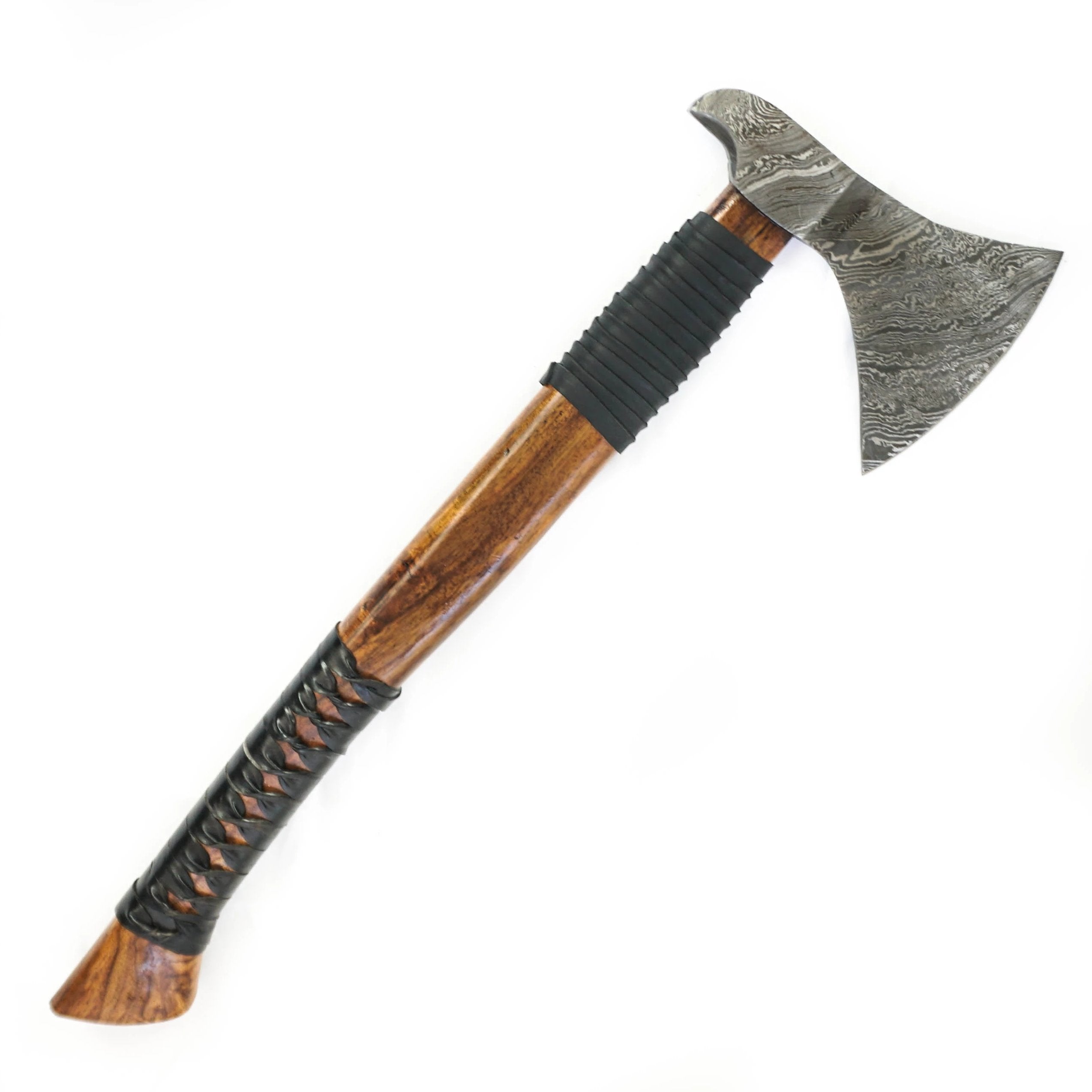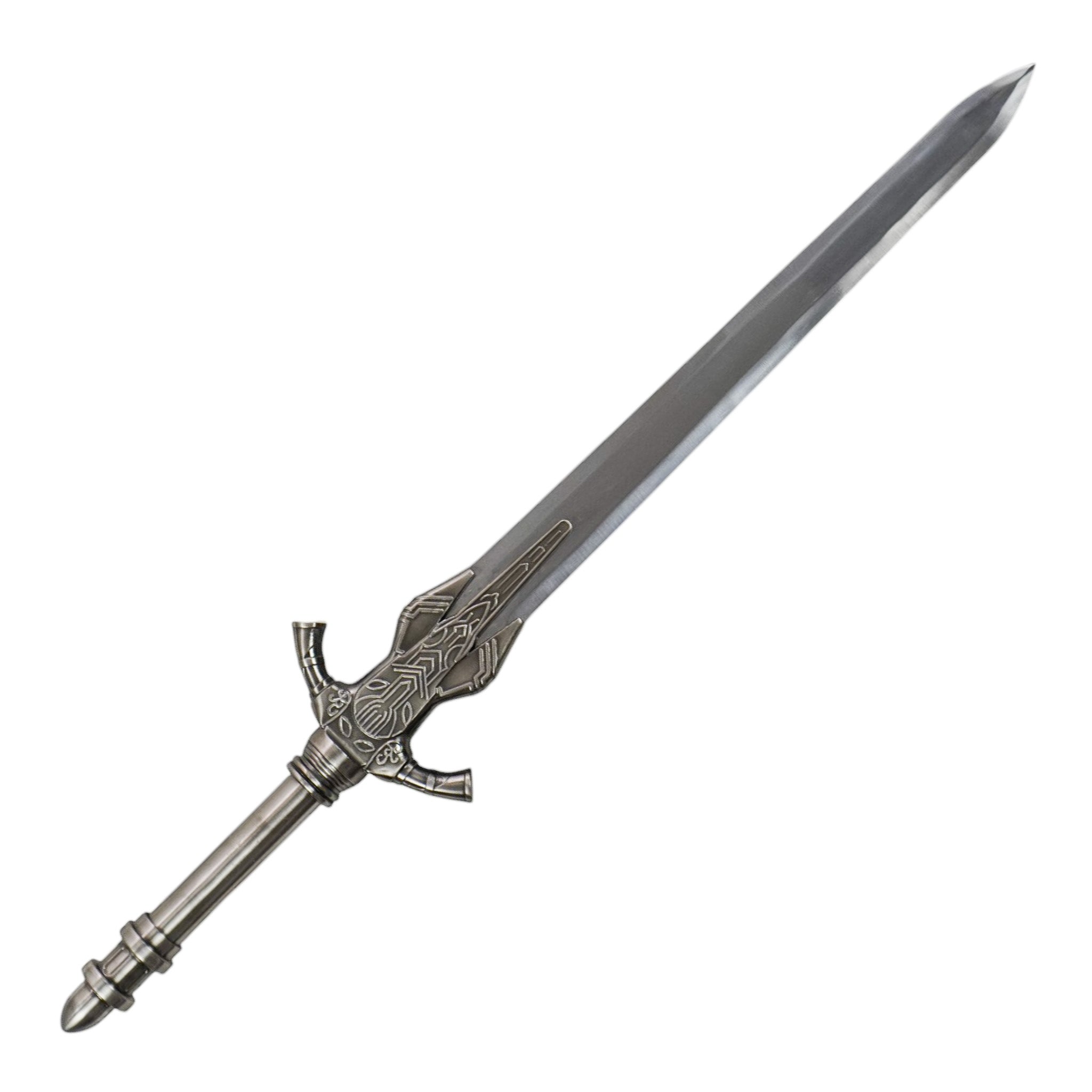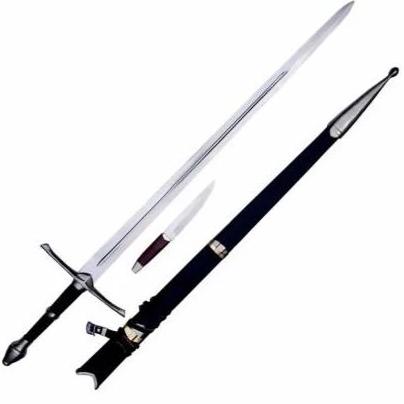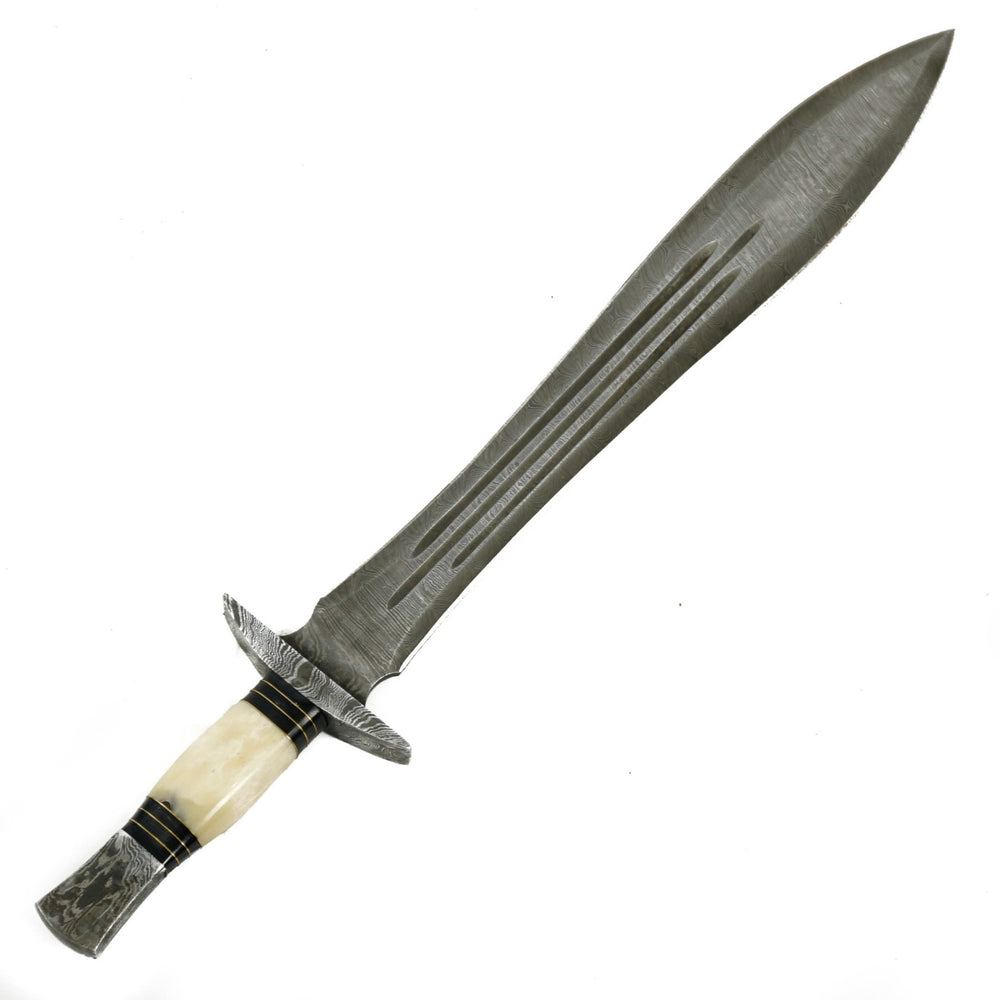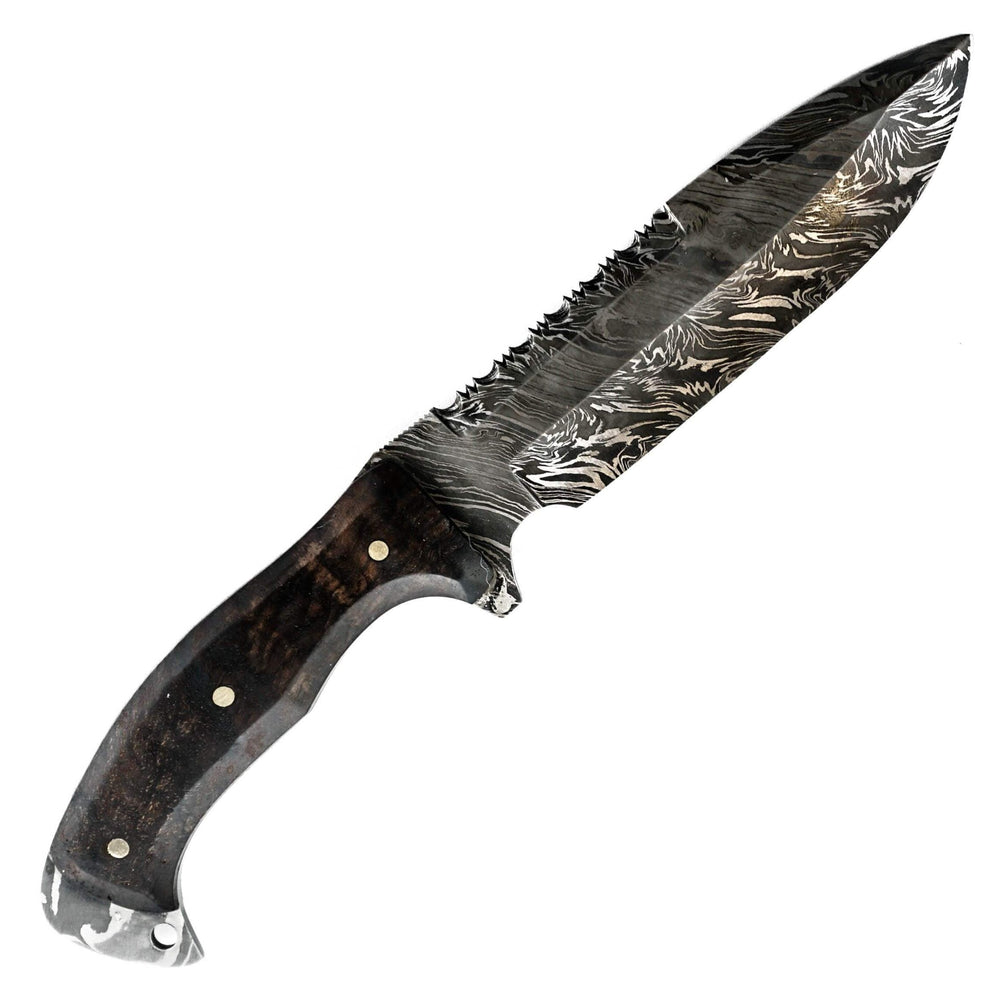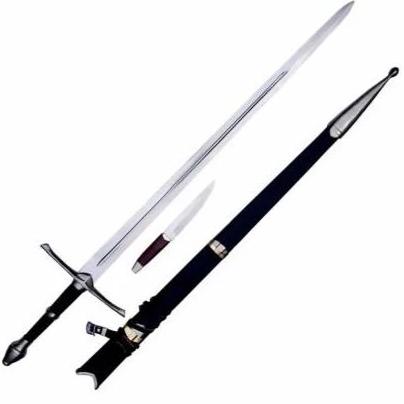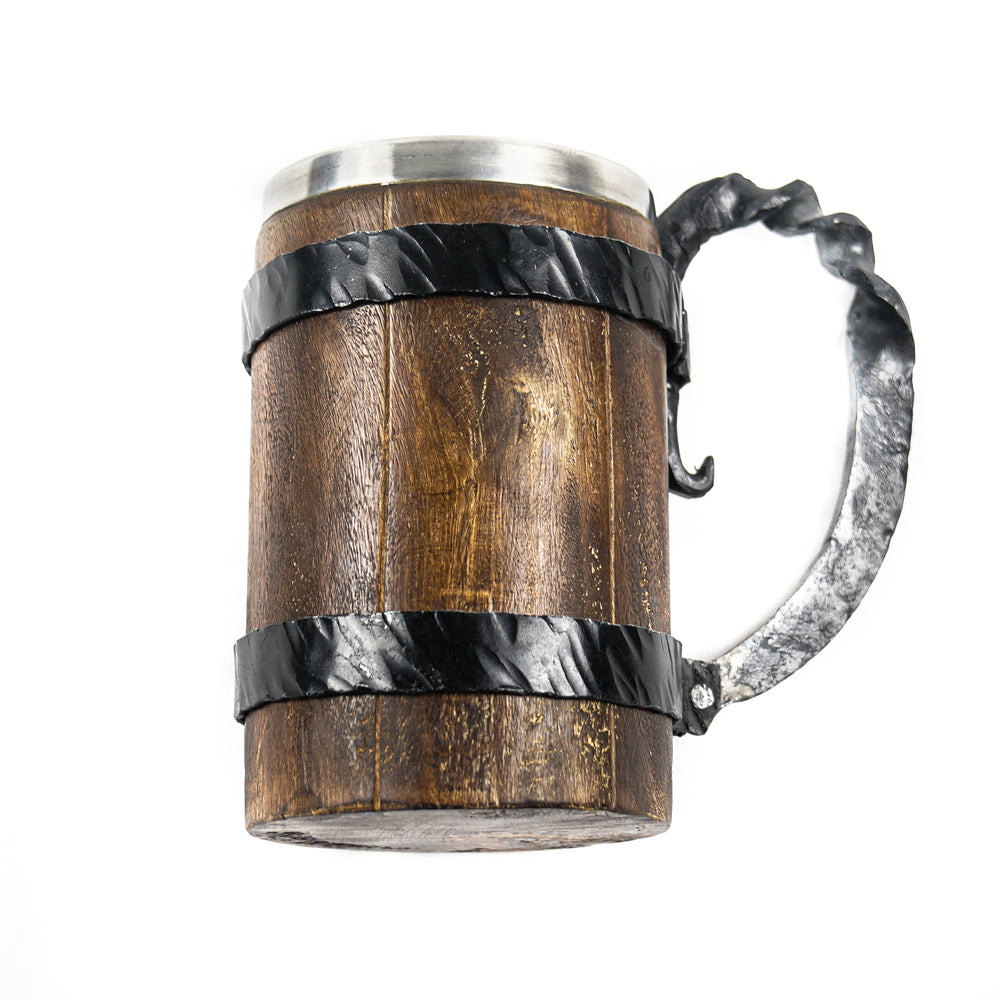Types of Swords
There are many types of swords. Below are short summaries of the different types of swords.
Bastard Sword
The Bastard sword, or longsword, also known as long sword or long-sword, is a type of European sword characterized by a cruciform hilt with a two handed with a straight double-edged blade. The longsword was prevalent during the late medieval and Renaissance periods (approximately 1350 to 1550), with early and late use reaching the 13th and 17th centuries. The term bastard sword is used to identify the longsword during the late medieval and Renaissance period. To be defined as a bastard sword, the sword must be between 33"-43".
Bastard Sword Example:
Cane Sword
A cane sword or swordstick or is a cane containing a hidden blade. The term is typically used to describe European weapons from around the 18th century, but similar devices have been used throughout history, notably the Roman Dolon, the Japanese Shikomizue and the Indian Gupti. During the 18th and 19th century, the cane sword was a popular fashion accessory for the wealthy. During this period, it was becoming less socially acceptable to openly carry a sword, but upper-class men routinely trained in swordsmanship.
Cane Sword Example:
Claymore Sword
The claymore sword is a Scottish or Gaelic sword popular from the 15th- 17th centuries. There are two variants of the sword. The first is a two-handed sword with an optional basket grip (also known as a basket hilt). The basket grip if similar to the hilt of the rapier sword except it allows for two hands on the grip. This sword is similar to the standard bastard sword or longsword used throughout Europe. The second type of claymore has a forward sloping or v-shaped hilt. The term “claymore” was originally used in Scotland in the 18th century to describe basket gripped swords. In 1707, the Scottish and English armies banded together under the Acts of Union and the claymore sword was used as the Highland symbol of strength and prowess. The sword continued to be used by the Scottish regiments until the 19th century.
Claymore Swords Example:
Cutlass Sword
The cutlass sword (also known as the pirate sword) is a short, broad sabre or slashing sword, with a straight or slightly curved blade sharpened on the cutting edge, and a hilt often featuring a solid cupped or basket-shaped guard. It was a common naval weapon during the Age of Sail. The cutlasses are famous for being used by pirates. Pirates used these weapons for intimidation as much as for combat. Often no more than to gripping their hilts induced a crew to surrender. They also used the flat of the blade to force compliance or responsiveness during interrogation.
Cutlass Sword Example:
Gladius Sword
Gladius swords were used to describe the primary sword of Ancient Roman foot soldiers. Gladius is Latin for sword. Early ancient Roman swords were similar to those of the Greeks. From the 3rd century BC, the Romans adopted swords similar to those used by the Celtiberians. The also adopted various versions of the sword during their conquest of Hispania. These swords were known as the gladius hispaniensis, or Hispanic Sword. Conventionally, soldiers threw javelins to disable the enemy's shields and disrupt formations before engaging in close combat where the primary weapon was the gladius sword. A soldier generally led with the shield and thrust with the sword. All gladius types appear to have been suitable for cutting and chopping as well as thrusting.
Gladius Sword Example:
Haladie Sword
The haladie is a double-edged dagger originating from ancient Syria and India. It consists of two curved blades attached to a single hilt and was used for both stabbing and slicing. The weapon was used by warriors of the Indian Rajput clans. Daggers have historically been used for close combat confrontations, and many cultures have used daggers in ceremonial and ritual contexts. A dagger is a weapon designed for close-proximity combat or self-defense. In some cultures, daggers are a symbol of manhood. In others, they are ritual objects used in body modifications such as circumcision. Daggers are primarily weapons, so knife legislation in many places restricts their manufacture, sale, possession, transport, or use.
Haladie Sword Example:
Katana Sword
Historically, the katana sword (also known and samurai sword) were one of the Japanese weapons that were used by the samurai of ancient and feudal Japan. The katana is characterized by its distinctive appearance with a curved, single-edged blade, a circular or squared guard, and long two-handed grip. Western historians have said that katana were among the finest cutting weapons in world military history. Katana defines a sword of this description that is longer than 24".
Katana Sword Example:
Ninjato Sword
Historically, the ninja sword (also known and samurai) was one of the Japanese weapons that were used by the ninja of ancient and feudal Japan. The ninjato is characterized by its distinctive appearance with a straight, single-edged blade, a circular or squared guard, and long two-handed grip. Western historians have said that ninjato were among the finest cutting weapons in world military history.
Ninjato Sword Example:
Rapier Sword
The rapier sword is a loose term for a type of slender, sharply pointed sword. The rapier is optimized to be a thrusting weapon but can also be used for cutting or slashing. While some rapiers are only sharpened at the tip, this rapier is sharpened throughout the length of the sword. Rapiers have a complex hilt to protect the hand. Some historians classify the rapier as a type of broadsword or saber. This weapon was mainly used in Early Modern Europe during the 16th and 17th centuries. The purpose of the one-handed sword, as opposed to the two-handed longsword, was to use one hand for the sword and the other for use of another weapon such as a dagger or pistol. In this way, the rapier is akin to the gladius sword of Roman times where foot soldiers used the short gladius in one hand with a shield on the other.
Rapier Swords Example:
Scimitar Sword
The scimitar sword is a backsword or sabre with a curved blade, originating in the Middle East. The scimitar was widespread throughout the Middle East from at least the Ottoman period, with early examples dating to the 9th century. There is debate on the origins of the word scimitar. The Arabic term saif is likely to be derived from the same source as Greek xiphos (the straight, double-edged sword of Greek antiquity). The Persian sword now called shamshir appeared in the 12th century and was popularized in Persia by the early 16th century.
Arabian Scimitar Sword Example:
Short Sword
The short sword is a type of European sword characterized by a cruciform hilt with a one handed with a straight double-edged blade. It differs from the longsword by the length of the grip and blade. The short sword was prevalent during the late medieval and Renaissance periods (approximately 1350 to 1550), with early and late use reaching the 13th and 17th centuries. The term bastard sword is used to identify the longsword during the late medieval and Renaissance period.
Short Sword Example:
Longsword
The longsword, also known as long sword or long-sword, is a type of European sword characterized by a cruciform hilt with a two handed with a straight double-edged blade. The longsword was prevalent during the late medieval and Renaissance periods (approximately 1350 to 1550), with early and late use reaching the 13th and 17th centuries. The term bastard sword is used to identify the longsword during the late medieval and Renaissance period.
Longsword Example:
Viking Sword
The Viking sword (also known as the Viking age sword) or Carolingian sword is the type of sword prevalent in Western and Northern Europe during the Early Middle Ages. The Viking sword developed in the 8th century from the Merovingian sword and was the primary sword used by the Scandinavian based Viking people. The sword was derived from the Roman Gladius sword. It is a single handed sword with a sharp tip and edges designed for slashing as well as thrusting. Viking swords remained popular until the 12th century where they blended into Norman swords which were the first stages of the knightly sword.
Viking Sword Example:

